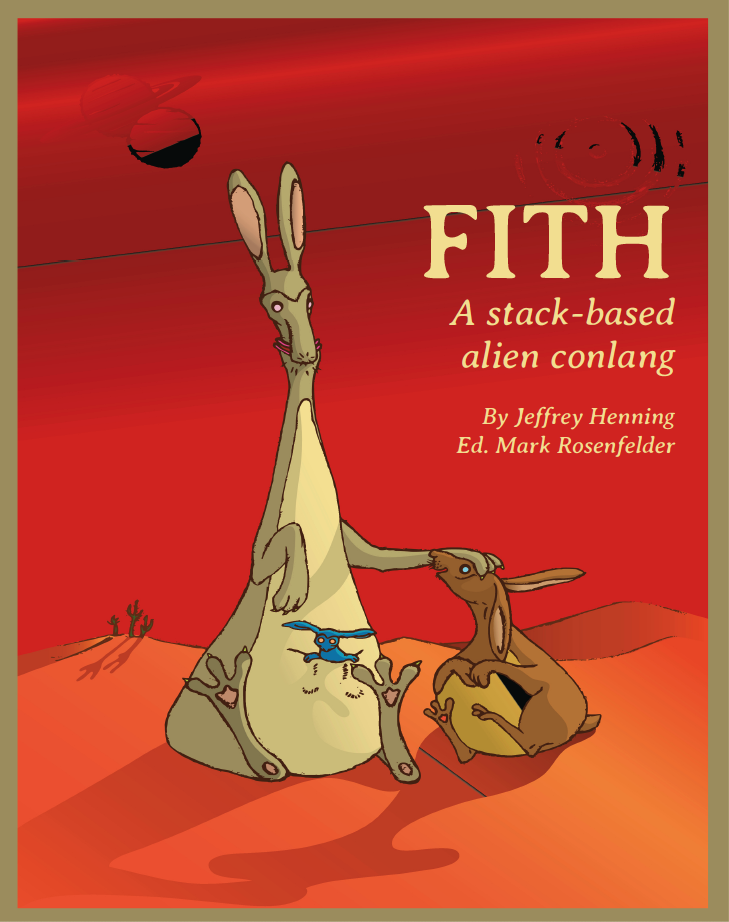An avid Trekkie, I had read and admired Marc Okrand’s book, The Klingon Dictionary, when it was first published in 1985. Marc, a linguist by training, designed the Klingon language to sound alien and to embrace features that rarely occurred in natural languages. That said, Klingon could still be a human language.
In 1996, I was inspired to create a truly alien language, one unlike any natural language at all: Fith. My inspiration was the postfix notation used on my HP calculator and in the FORTH programming language. The name Fith, alas, is just a bad pun (from FIFTH, as if it were a sequel to FORTH). Fith’s syntax isn’t alien to computer programmers of a certain generation, but it is alien to how people make and interpret sentences.
After developing the phonology and phonotactics of Fith, I created the list of words using LangMaker for Windows. I decided I wanted each word to have a single meaning, unlike the words in natural languages, so I used the monosemous senses from WordNet.
Fith has always been somewhat of an oddity in the conlanging community. Mark Rosenfelder told me it was “one of the biggest mind-benders in conlanging.” While conceived as an artlang, Fith has been embraced as an engineered language or an alien loglang as well. And I was delighted in 2019 when David J. Peterson—author of The Art of Language Invention, creator of many conlangs for television series and movies, and former collaborator of mine on Langmaker.com—gave Fith the 2019 Smiley Award.
When Mark Rosenfelder was editing Langmaker: Celebrating Conlangs, for Yonagu Books, he wrote a new introduction to the language and provided an excerpt of the lexicon. I’ve finally formatted the entire lexicon, and with Mark’s blessing, made it available as a free ebook on Itch.io.
I hope you enjoy reading about Fith as much as I enjoyed creating it. I’m collecting questions and requests for a subsequent edition of this; feel free to comment on the Fith Google Doc.
Credits: Cover illustration by Maxemillion; cover design by Nakade.


